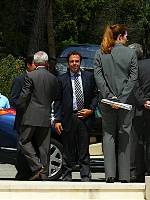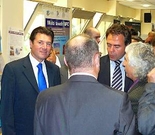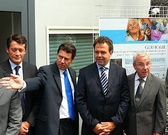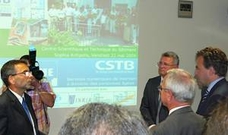Keeping the elderly at home and independent

After issuing its call for candidates in December last year, the Ministry of Health finally made a decision and chose the project designed by the SCS (Secure Communication Solutions) competitiveness cluster. SCS is a cluster in the PACA region, but it operates on the world scale. The candidature introduced by the SCS cluster includes Nice CHU (University Hospital Centre), a long-standing partner of CSTB in the field of keeping the elderly at home, the Limoges, Toulouse and Grenoble CHUs and other research organisations including CSTB, that has made supporting community living one of its themes for studies and research.
The challenge for the future CNR Santé à Domicile et Autonomie is enormous. Now that the number of doctors is reducing and the number of chronic pathologies is increasing, at the same time as the elderly want to and are expected to remain safely at home for as long as possible, it is time to put more energy into a networked mobilisation, to design, experiment and then a little later evaluate technical solutions for maintaining independence, living comfort, safety and support at home.
610 000 elderly persons were assisted at home in 2006, and there was a very strong increase in personal services such as nursing care, delivery of meals at home. In terms of safety, conventional emergency call pendants were not as successful as was hoped in preventing emergency situations: the elderly often put them down and forget them, particularly when they get up during the night; or they may be no longer conscious after falling and can't use them. In addition, these systems cannot contribute to prevention.
Avoiding emergency situations
Patrick Morand, Director of the Information Technologies and Distribution of Knowledge Department at CSTB in Sophia Antipolis, tells us: "We are now working with gerontologists at Nice CHU to reach an understanding about the capability of a person to live alone safely, the principle no longer being to provide instrumentation on the person, but rather in his or her home". Activity sensors are installed in the homes of the elderly. They are low consumption systems that communicate by radio frequency, so that the installation and maintenance in an existing building are simple and economic. They are placed at key locations (water points, refrigerator door, hobs, etc.), and collect data about the activity of the occupant. Information can be analysed and correlated to identify the main activities of the elderly person including toilet, preparing and eating meals, rest periods during the day, etc., and to evaluate their ability to remain at home alone safely. Monitoring and analysis of activity in the long term also provide a means of working on prevention, by identifying unusual behaviour, differences from usual living rhythms that may be significant of physical or psychic disorders. Early detection can prevent emergency situations by setting up or reinforcing assistance systems early.
The CNR Santé à Domicile et Autonomie will receive financial support from the Ministry of Industry, equal to an amount of 4 million Euros over three years. The objective is to become self-financing by 2012, and to be capable of evaluating and labelling this type of innovative solution in a growing market, by 2014 …
The over 65s…
- Were 16.5% of the French population in 2007,
- Will be 25.5% of the French population in 2010 and 41.8% of the French population in 2050!



